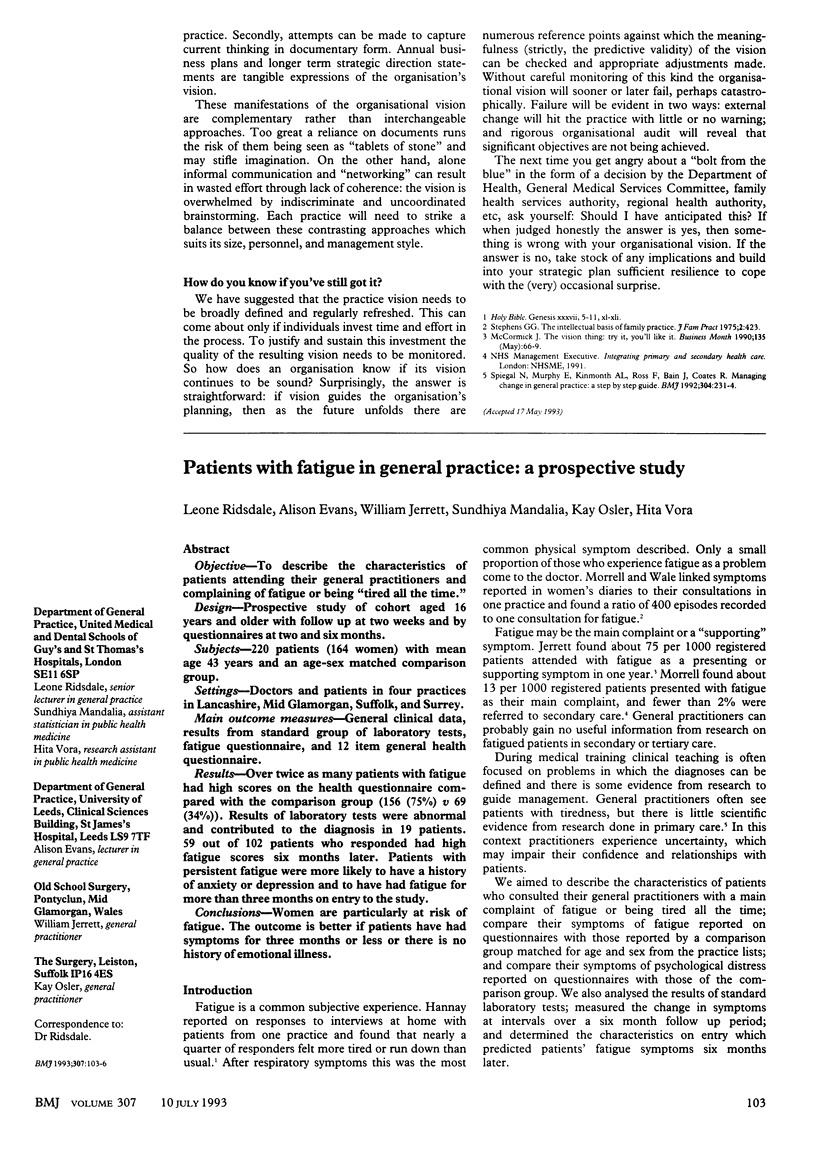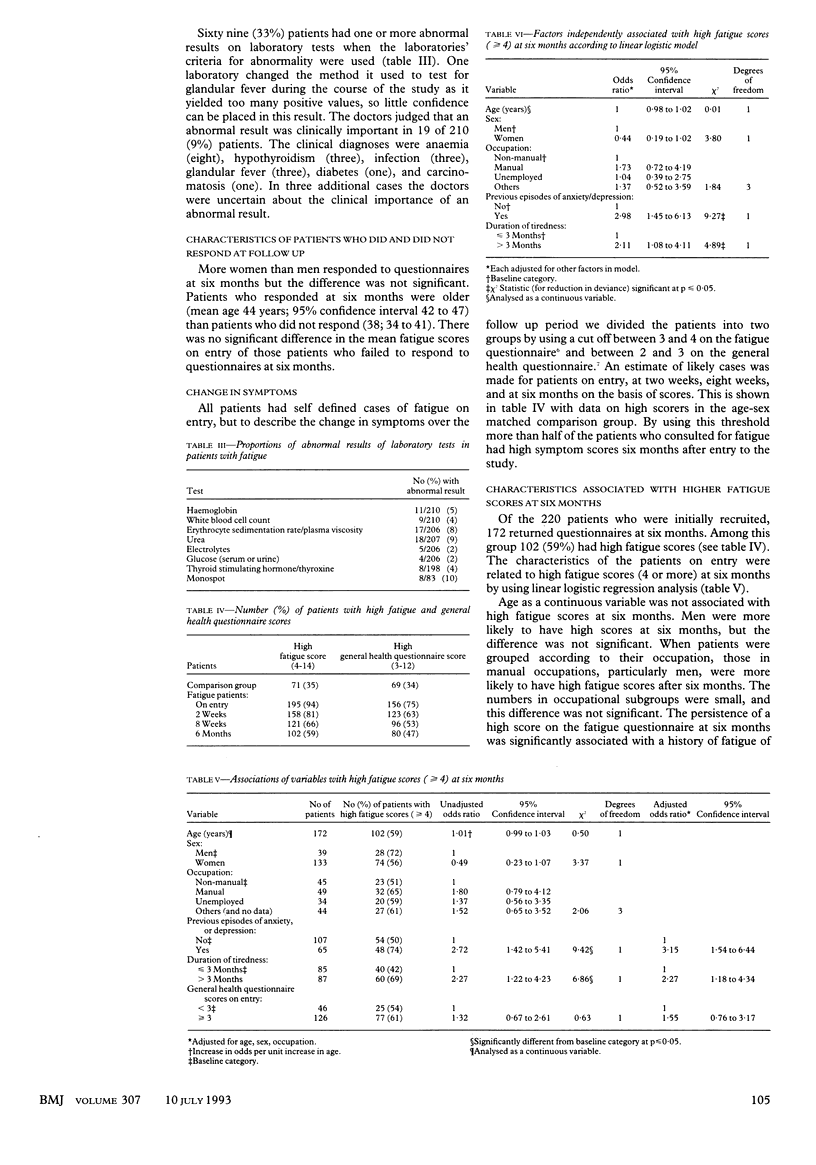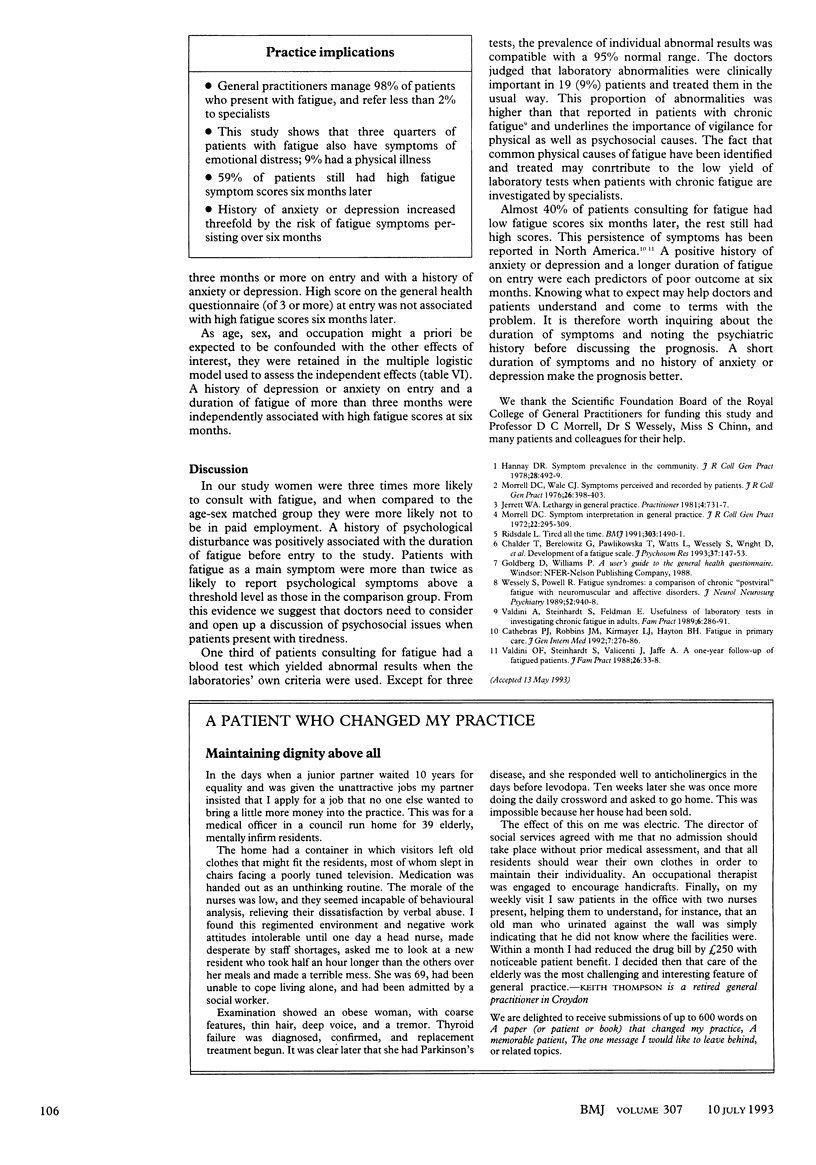Abstract
OBJECTIVE--To describe the characteristics of patients attending their general practitioners and complaining of fatigue or being "tired all the time." DESIGN--Prospective study of cohort aged 16 years and older with follow up at two weeks and by questionnaires at two and six months. SUBJECTS--220 patients (164 women) with mean age 43 years and an age-sex matched comparison group. SETTINGS--Doctors and patients in four practices in Lancashire, Mid Glamorgan, Suffolk, and Surrey. MAIN OUTCOME MEASURES--General clinical data, results from standard group of laboratory tests, fatigue questionnaire, and 12 item general health questionnaire. RESULTS--Over twice as many patients with fatigue had high scores on the health questionnaire compared with the comparison group (156 (75%) v 69 (34%)). Results of laboratory tests were abnormal and contributed to the diagnosis in 19 patients. 59 out of 102 patients who responded had high fatigue scores six months later. Patients with persistent fatigue were more likely to have a history of anxiety or depression and to have had fatigue for more than three months on entry to the study. CONCLUSIONS--Women are particularly at risk of fatigue. The outcome is better if patients have had symptoms for three months or less or there is no history of emotional illness.
Full text
PDF



Selected References
These references are in PubMed. This may not be the complete list of references from this article.
- Cathébras P. J., Robbins J. M., Kirmayer L. J., Hayton B. C. Fatigue in primary care: prevalence, psychiatric comorbidity, illness behavior, and outcome. J Gen Intern Med. 1992 May-Jun;7(3):276–286. doi: 10.1007/BF02598083. [DOI] [PubMed] [Google Scholar]
- Chalder T., Berelowitz G., Pawlikowska T., Watts L., Wessely S., Wright D., Wallace E. P. Development of a fatigue scale. J Psychosom Res. 1993;37(2):147–153. doi: 10.1016/0022-3999(93)90081-p. [DOI] [PubMed] [Google Scholar]
- Hannay D. R. Symptom prevalence in the community. J R Coll Gen Pract. 1978 Aug;28(193):492–499. [PMC free article] [PubMed] [Google Scholar]
- Jerrett W. A. Lethargy in general practice. Practitioner. 1981 May;225(1355):731–737. [PubMed] [Google Scholar]
- Morrell D. C., Wale C. J. Symptoms perceived and recorded by patients. J R Coll Gen Pract. 1976 Jun;26(167):398–403. [PMC free article] [PubMed] [Google Scholar]
- Valdini A. F., Steinhardt S., Valicenti J., Jaffe A. A one-year follow-up of fatigued patients. J Fam Pract. 1988 Jan;26(1):33–38. [PubMed] [Google Scholar]
- Valdini A., Steinhardt S., Feldman E. Usefulness of a standard battery of laboratory tests in investigating chronic fatigue in adults. Fam Pract. 1989 Dec;6(4):286–291. doi: 10.1093/fampra/6.4.286. [DOI] [PubMed] [Google Scholar]
- Wessely S., Powell R. Fatigue syndromes: a comparison of chronic "postviral" fatigue with neuromuscular and affective disorders. J Neurol Neurosurg Psychiatry. 1989 Aug;52(8):940–948. doi: 10.1136/jnnp.52.8.940. [DOI] [PMC free article] [PubMed] [Google Scholar]


